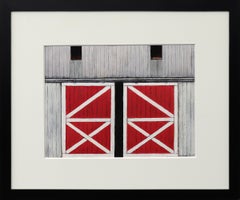Joseph Presser Art
Josef Presser was born in Lublin, Poland. He studied at the Boston Museum of Fine Arts School in Europe, and with Bryant Baker, Henry Hunt Clark, Philip Hale and William James. He was a member of the Philadelphia Watercolor Club and the New Haven Paint and Clay Club and exhibited at the Carnegie Institute, Pittsburgh, The Art Institute of Chicago, The Pennsylvania Academy of Fine Arts and the Metropolitan Museum of Art, New York. Presser’s work is in many museum collections, both here and abroad, including the Uffizi, Florence, The Whitney Museum of American Art and the Metropolitan Museum of Art, New York and the Philadelphia Museum of Art and the Philadelphia Art Alliance, Philadelphia.
1960s American Modern Joseph Presser Art
Watercolor, Oil Pastel, Archival Paper
Mid-20th Century Abstract Joseph Presser Art
Paper, Mixed Media
1960s American Modern Joseph Presser Art
Watercolor, Archival Paper
1980s American Modern Joseph Presser Art
Oil Pastel, Paper
20th Century American Modern Joseph Presser Art
Watercolor, Archival Paper
1940s American Modern Joseph Presser Art
Watercolor, Archival Paper
1960s American Modern Joseph Presser Art
Archival Paper, Watercolor
2010s Abstract Geometric Joseph Presser Art
Mixed Media, Oil, Acrylic, Watercolor, Archival Paper
20th Century American Modern Joseph Presser Art
Watercolor, Archival Paper
1970s Abstract Joseph Presser Art
Mixed Media, Handmade Paper
2010s Abstract Joseph Presser Art
Mixed Media, Oil, Acrylic, Watercolor, Archival Paper
1920s American Modern Joseph Presser Art
Archival Ink, Watercolor, Archival Paper
20th Century American Modern Joseph Presser Art
Watercolor, Archival Paper
20th Century American Modern Joseph Presser Art
Watercolor, Archival Paper



